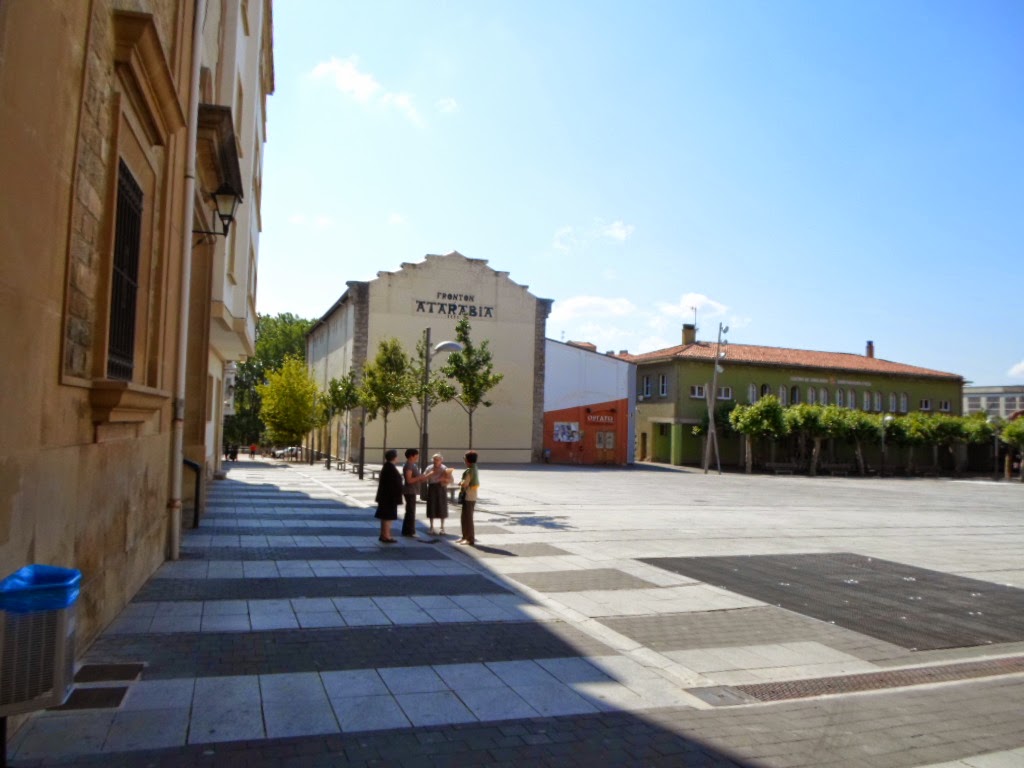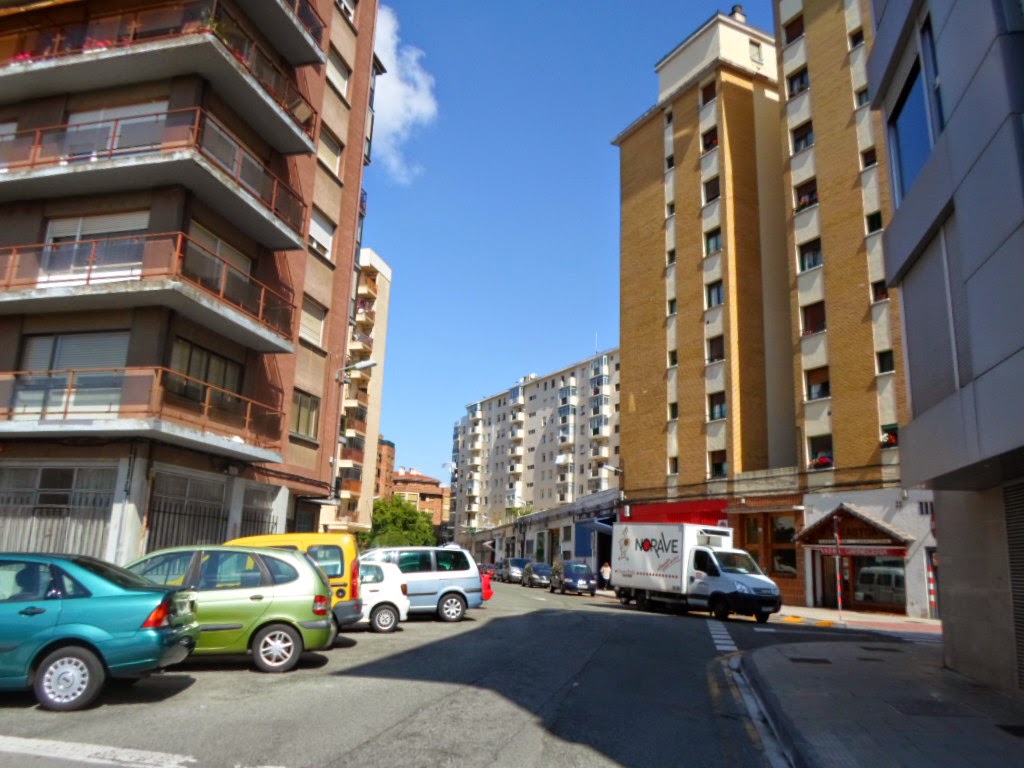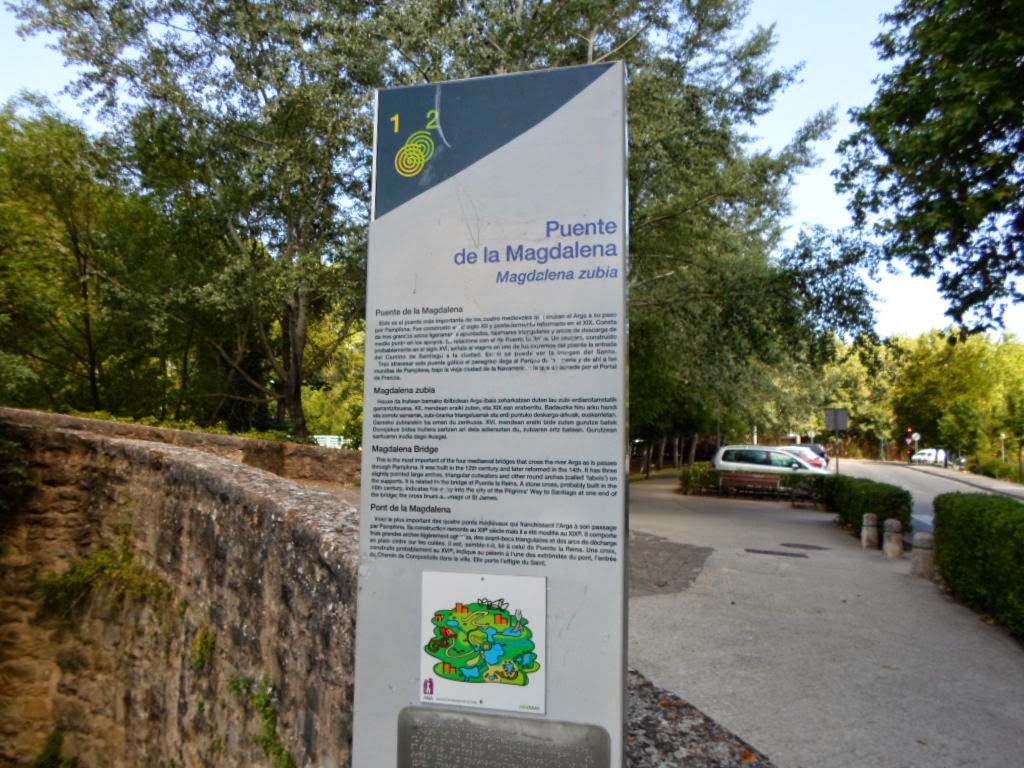I left Zubiri at 6:20 am and arrived at Pamplona at noon - walking a total distance of 20.5 km (12.7 miles). Even though I started early, I was exposed to the heat and sun (at around 10:30 am) as some parts of the trail were unshaded. For many of the pilgrims, it seemed like a race to the next destination as arriving early and securing a bed was on the top of the agenda. I tried not to be influenced by their pace and did my own thing - I prayed and took many photos along the way. Ironically, I arrived at the German-managed Casa Paderborn in Pamplona at noon just in time when their doors opened. I waited in line for about 30 minutes while some of those who arrived before me were served. The rate was 6 euros for a bed and 2.50 euros for breakfast. I got a lower bunk bed on the second floor, which was just fine. Everything worked out in the end. I was glad I didn't rush it like the rest and took my time to be in the here and now.
I attended a Pilgrims' Mass at 7:30 pm at the Church of San Saturnino or San Cernin. It was a quick service with a small number of attendees. Nonetheless, it felt great to slow down and be in the house of the Lord to regroup. I appreciated the blessings by the priest at the end of the Mass. It meant a lot when the spirit and physical body were weak. I caught a slight cold last night at Zubiri when someone left the dorm room window opened and I felt the effect at Pamplona. After Mass, I took a cold tablet and went to bed and I slept like a baby.
Above left: This French Basque man tried to tout me his drawings
Above left: Breakfast of Earl Grey tea and potato-egg-cheese torta at the only bar/restaurant/hotel in Zuriain at 8:30 am
Above: At Zabaldika
Above: Arriving at Atarrabia (founded in 1184)
Above right: The World Cup fever is on
Above left: A welcome sign in Pamplona
Above: The Magdalena Bridge - "The most important of four medieval bridges that crosses the river Arga as it passes through Pamplona. It was built in the 12th-C and later reformed in the 14th-C. It has three slightly pointed large arches, triangular cutwaters and other round arches (called 'labels') on the supports. It is related to the bridge at Puente La Reina. A stone cross, probably built in the 16th-C, indicates the entry into the city of the Pilgrims' Way to Santiago at one end of the bridge; the cross bears an image of St. James" (per signage next to the bridge)
Above right: Checking in at Casa Paderborn - we were welcomed with a cup of juice and cookies
Above right: Andrea and Gerda, German volunteers at Casa Paderborn
Next post: Day 5 - Pamplona (June 18, 2014)
Previous post: Day 3 - Roncesvalles to Zubiri (June 16, 2014)


































































































No comments:
Post a Comment